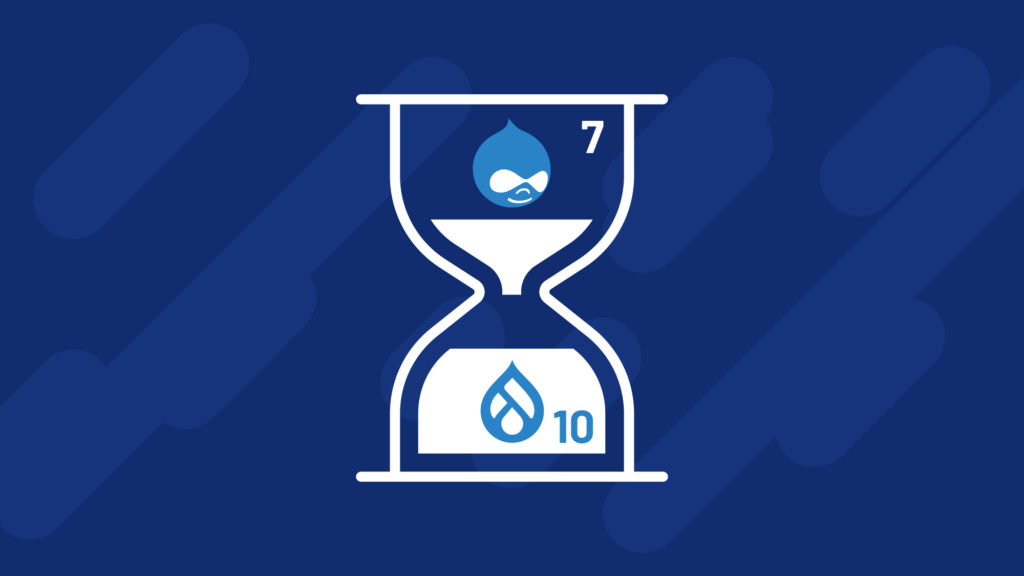Drupal 10 Is Here – Here’s What You Need To Know
It's time to get to know Drupal 10! It has been nearly half a year since it launched in December 2022. This means you have roughly half a year to go before versions 7 and 9 are no longer supported by the Drupal community, with end-of-life scheduled for November 1 of this year.
Plans are in place to reassess Drupal 7’s discontinuation in mid-2023. Support for the platform could end up being extended once more, as it has been multiple times since its originally planned obsolescence in 2020. But even if it is extended once more, it’s only a matter of time before support ends. Meanwhile, Drupal continues to evolve and taking advantage of its latest innovations will require a more advanced version.

Why you need to upgrade
Drupal 7 remains stubbornly popular. More than half of all Drupal websites still use it, while roughly a third use D9. The major reason for its enduring use is that upgrading from 7 to any of the more advanced versions is a big production, requiring a full-fledged migration.
While upgrading from Drupal 7 might be a big deal, the alternative is running your site on an unsupported platform. This is a bad idea for many reasons. The main issue is security. An unsupported platform is much more vulnerable to attacks without Drupal’s regular maintenance and updates. Functionality will also be reduced once the Drupal community has moved on from maintaining D7’s core and modules. Any bugs will have to be fixed in-house or by an external agency.
In short, maintaining site security and functionality on an unsupported version of Drupal is going to be much more costly and labor-intensive than simply upgrading to D10. Even with the steep climb from Drupal 7, the alternative is much more complicated and expensive in the long run.
Before you upgrade
With the clock now ticking on Drupal 7 and 9, you might be thinking you need to schedule your upgrade as soon as possible. However, there are things to consider before you dive into Drupal 10.
Drupal Core is entirely ready for D10, but many contributed modules aren't yet D10-compatible. While the Drupal community is working overtime to update all contributed modules, this is a long process. Many popular modules are still unready for the upgrade. If you’re operating on Drupal 9, your site may not be quite ready for Drupal 10.
Don't know if your site has modules that haven’t been upgraded yet? You can find out by installing Upgrade Status, which will provide you with the status of all your contributed modules. If you have modules that are not yet D10-compatible and no substitutes exist, you'll want to hold off a bit.
What’s new in Drupal 10?
Those of you who are already using Drupal 9 will find the adjustment to Drupal 10 to be pretty easy. However, Drupal 10 does have some noteworthy upgrades. These include a new underlying technology stack (Symfony 6.2) and a new version of PHP (8.1). This promises a longer support lifetime for Drupal 10 as well as more stability and predictability in its dependency requirements.
Highlights of the new platform include:
- A new front-end theme (Olivero). This replaces the previous theme Bartik and is designed with accessibility in mind and meeting the WCAG Level AA standard.
- A new back-end theme (Claro) replacing the previous theme Seven, also designed with maximum accessibility in mind.
- A new content interface in the form of CKEditor 5. This provides all the functionality of Microsoft Word or Google Docs and improved collaboration tools such as comments, suggested edits, version history, and the ability to export to .docx and .pdf files.
- Starterkit theme generator, which allows developers to create a copy of a compatible theme to work on while retaining the original theme. This provides a safer approach to theme building than Drupal 9's runtime inheritance.
- Improved headless capability out of the box through the addition of read-only menus for Drupal HTTP APIs.
- Automatic updates, which are expected to be introduced in version 10.1 or 10.2, which will include notifications of available updates and a one-click update process.
The upcoming automatic updates, while a great feature, will increase the need for automated testing, given that updates will be arriving very quickly to the QA environment. Depending on the speed of your testing pipeline, manual tests may be required every time Drupal Core or a contributed module receive an update.


